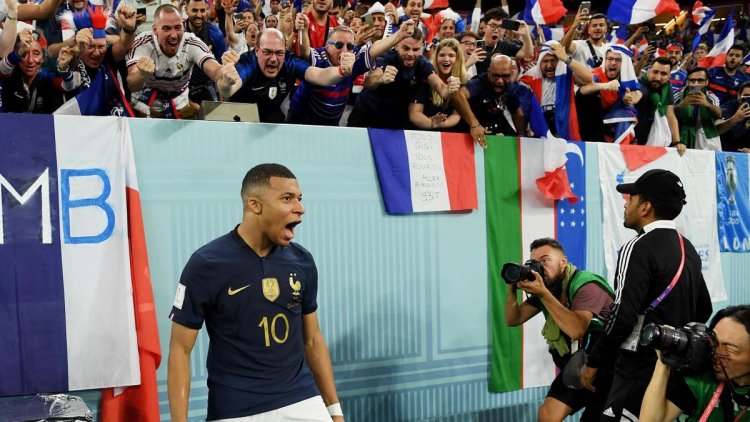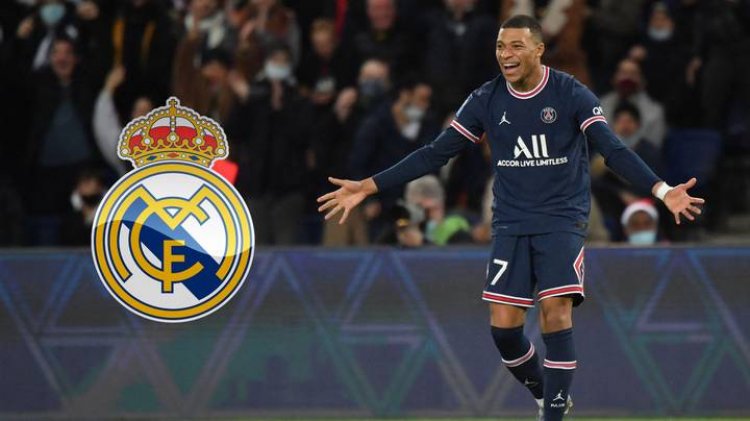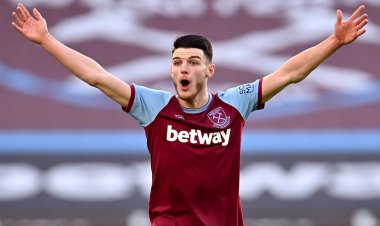Lesson for Gusau and NFF on how the French used Clairefontaine to produce Mbappé and others.
The Clairefontaine site is home to more than a dozen football pitches surrounded by a forest that extends as far as the eye can see.

France Under-16 were playing a practice match against the under-15s at the country’s national football centre on Thursday when a shout rang out: “Give me the ball, Kyliane.”
The pass duly arrived under the watchful eye of a coach too busy focusing on the technique of the teenagers on the pitch — “you’re taking too long, cut out the unnecessary touches” — to worry about the resonance of the name.
A little over a decade ago, another Kylian — this one spelt without an e — spent two years at the centre in Clairefontaine, in the middle of Rambouillet forest an hour or so from Paris.

Kylian Mbappé, a bright if somewhat turbulent child, was already seen as a possible future star when he arrived in 2011 at the institute that the French like to depict as a bastion of sporting excellence.
Yet he could have easily ended up going off the rails, according to Alain Mboma, a football manager who knew the player’s family when they were living in the troubled north Paris suburb of Bondy.
“He was a child capable of blowing a fuse if he didn’t get what he wanted,” he told Sport-Foot Magazine, the Belgian weekly. “He was the sort of kid who could have exploded in a council estate.”
At primary school Mbappé took a test that found he had a high IQ, although the result would have been better still had he not skipped the final questions to go and play in the playground.
At secondary school, it was a similar story. He concentrated on English and Spanish lessons because he hoped to play in the Premier League or La Liga.
But he was distracted and troublesome in other subjects, according to teachers, who said he that used his naturally charming smile to escape too harsh a punishment.
If Mbappé remained on the straight and narrow, it was no doubt in large part due to his parents, and notably to Fayza Lamari, his mother, who exercised such tight control over him that in his second year of secondary level she asked his teachers to keep hourly notes of his behaviour so that she knew whether he had spoken out of turn, arrived late for lessons or committed any other misdemeanour (when he once mocked a classmate’s jacket, for instance, she sent him to school in outdated flared trousers so that he knew what it felt like, for example).
Yet Mbappé also owes much to his 24 months at Clairefontaine, which encompassed his third and fourth years of secondary school, and enabled him to improve his skills and his discipline with an early-to-bed, early-to-rise, no-nonsense regime.

The national football institute selects 23 boys and a similar number of girls every year from trials involving 1,600 or so of the best young players in the Paris region. They are aged about 13, and spend 24 months at France’s footballing factory, going home at weekends. They wake at 6.50am, are bussed to the local secondary school after breakfast and return at lunchtime for homework and training sessions. Telephones must be handed in at 8.30pm.
“Football is a team sport and you have to learn to get on together,” Christian Bassila, 45, the director of Clairefontaine, says. “You can’t do that if you’re on your phone all the time.”
The Clairefontaine site is home to more than a dozen football pitches surrounded by a forest that extends as far as the eye can see.
In its midst is the château used by the senior France squads before international matches and tournaments, which was once the hunting lodge of a wealthy merchant banker.
It is only a couple of hundred metres from the boys’ dormitory but pupils are forbidden from setting foot inside — until they become full internationals.
There are 15 similar institutes in the French provinces, although none are as illustrious as Clairefontaine. It has produced numerous internationals, including Thierry Henry and Nicolas Anelka.

At this World Cup, four France squad members, along with a Tunisian and a Portuguese, are former pupils of the institute.
When the national system for detecting and developing young players was set up in the early 1970s, France was known for philosophy, haute couture and gastronomy, but considered a second-rate football nation.
The national team had finished bottom of their group in the 1966 World Cup and failed to qualify in 1970. The turnaround has been remarkable and is largely attributable to the detection and development of young players, according to Bassila.
“We’ve now qualified for the quarter-finals of the last three World Cups, which shows how far we have come,” Bassila says. “A lot of work has gone into this and I think you can say that France has been a pioneer in the way it develops [young players]. The results are there to see.”
When Mbappé went to Clairefontaine, the French Football Federation was in the midst of a controversy over claims that it had a secret quota for young white players amid concern that supporters might turn away from the national team if its players were all from ethnic minorities.
In order to disprove the allegations, Le Monde was invited to observe the “Promo 98”, as Mbappé’s year was known. Coaches were at pains to show that everyone, whatever their skin colour, was treated equally. That year, Mbappé was “le crack” (the champion), in whom the highest hopes were placed. Yet he remained modest in his interviews with the newspaper. “I know that it pays to work and to listen,” said the 13-year-old. “If I fail, I just don’t want to have any regrets.”
His words were not entirely empty. Two-thirds of the institute’s pupils never sign a contract as a professional footballer, and even the most talented sometimes stumble in the face of injury or fatigue. “These ones don’t make the headlines,” Bassila says. “But they are important for us, which is why the project here is as much about education as about football.”

For Mbappé , there was no such stumble. Real Madrid wanted to sign him at 14, and he went with his parents to meet Zinédine Zidane in the Spanish capital. Zidane picked them up in his car, which Mpabbé found so luxurious that he asked whether he should remove his shoes before getting in.
Yet his mother, who is of Algerian origin, and Wilfried Mbappé, his father, who was born in Cameroon, preferred to keep him away from the pressure of La Casa Blanca.
He went instead to AS Monaco, a comparative footballing backwater. Mbappé made his professional debut there before his 17th birthday, was transferred to PSG for €180 million (then about £160 million) in 2017, won the World Cup with France the next year and has now signed a new contract with the capital’s club worth a reported €625 million over three years. He is said to be intent on winning a second World Cup this month, England notwithstanding.

Other key Clairefontaine graduates
Thierry Henry
The most famous of all the graduates, Henry is Arsenal’s top scorer, and one of the greatest players in history. Fast, graceful and elegant — the striker would be any academy’s crown jewel.
Nicolas Anelka
A misunderstood man, but undoubtedly gifted. A technical, skilful and sharp forward, capable of playing as a lone striker or in a front two.
Olivier Giroud
Now France’s leading goalscorer, with 52. Giroud is a conventional No 9. His strengths lie not in his pace, but his hold-up play and ability to bring others into play.
Abou Diaby
A sublime midfielder despite a physique and height that would suggest otherwise. Diaby combined his natural power and stature with technical skills that were honed at Clairefontaine.
Blaise Matuidi
A battling, versatile and intelligent box-to-box midfielder, Matuidi spent three years at the Clairefontaine academy.
Hatem Ben Arfa
Common among Clairefontaine’s finest is a technical grace, an effortlessly smooth flow and featherlight touch, encapsulated best by Ben Arfa. A cult hero.
William Gallas
Unlike his peers of attacking and creative fame, Gallas was a centre back, though one who was technically gifted and tactically intelligent enough to play across the backline.-THE TIMES.




















